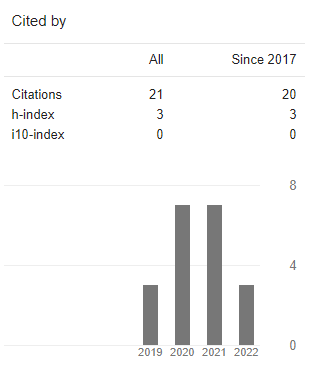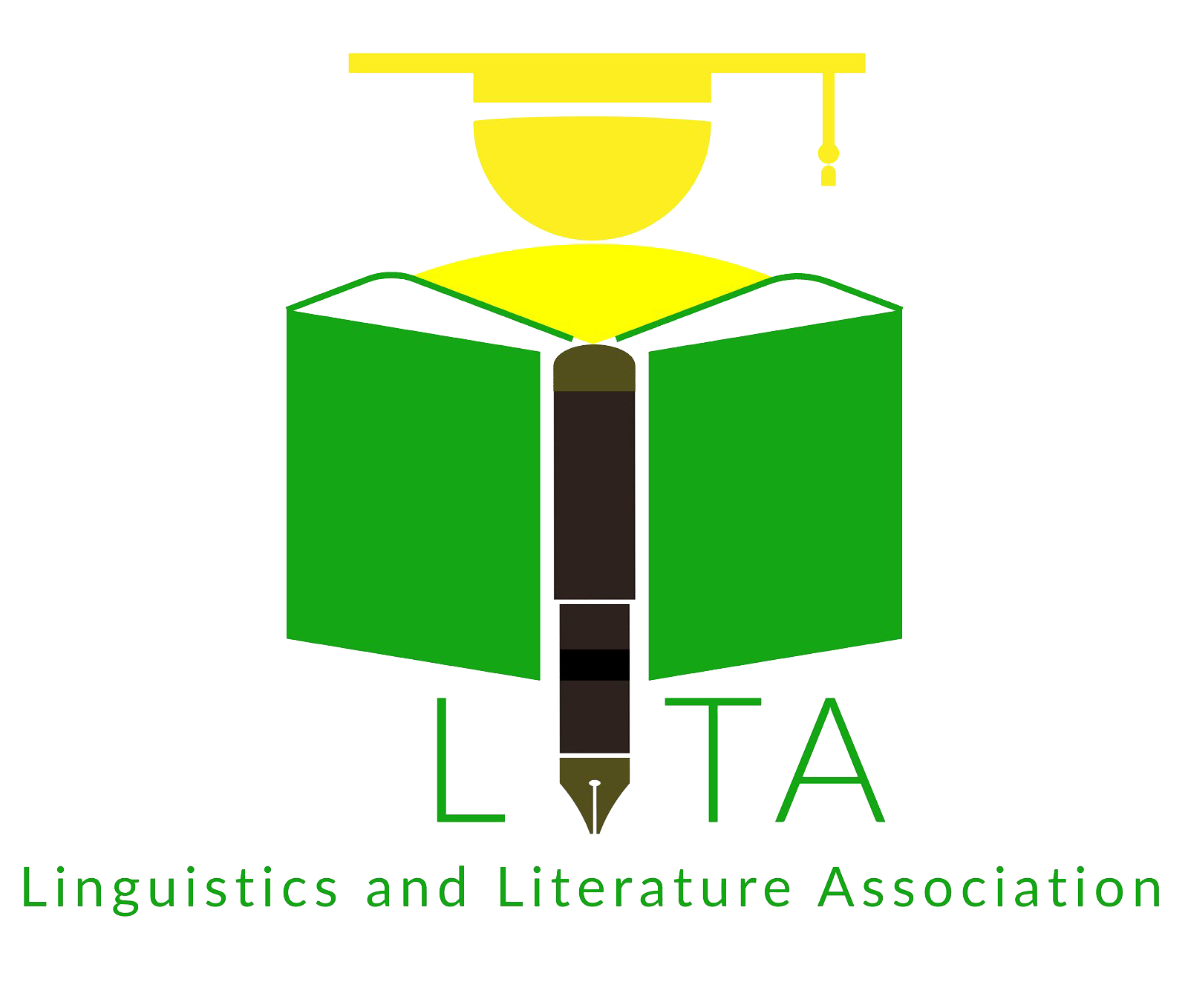Higher Order Thinking Reading Strategies: An Alternative to Improve Students’ Reading Comprehension in the Indonesian EFL Context
DOI:
https://doi.org/10.21776/ub.alphabet.2021.04.02.01Keywords:
higher order thinking reading strategies, graphic organizers, reading in English as a foreign languageAbstract
Teaching reading in English as a foreign language in Indonesia is challenging since it is not only to enable the students to comprehend a reading text, but also to enable them to relate their understanding of the text to their real life. This paper proposes an alternative to English teachers in Indonesia on how to employ higher order thinking reading strategies to achieve the objective. To begin with, the writer discusses reading and reading interest in Indonesia. The writer then reviews higher order thinking reading strategies, teaching strategies related to higher order thinking skills, and graphic organizers. In the end, the writer expects that Indonesian teachers employ higher order thinking reading strategies to encourage their students to use their knowledge and life experience while reading a particular text so that they will be interested in reading and comprehend the text better.
References
Adler, M.J. & Doren, C.V. (2011). How to read a book. New York: Touchstone Book.
Badan Pusat Statistik. (2015). Statistik 70 tahun Indonesia merdeka (The statistics of 70-year Indonesian independence). Jakarta: Badan Pusat Statistik.
Block, C., & Israel, S. (2005). Reading first and beyond: The complete guide for teachers and literacy coaches. Thousand Oaks, CA: Corwin Press.
Bromley, K., DeVitis, L.I. and Modlo, M. (1999). 50 Graphic Organizers for reading, writing & more. New York: Scholastic Professional Books
Cahyono, B.Y. & Widiati, U. (2006). The teaching of EFL reading in the Indonesian context: The state of the art. TEFLIN Journal, 17(1), pp. 23-46. http:// jour-nal.teflin.org/index.php/journal/article/view/58.
Central Connecticut State University (2016). World’ most literate nations. Retrieved from https://www.ccsu.edu/wmln/rank. html.
Chen, I-J. (2016). Hypertext glosses for for-eign language reading comprehension and vocabulary acquisition: Effects of assess-ment methods. Computer Assisted Language Learning, 26(2), pp. 413-426. https:// doi.org/10.1080/09588221.2014.983935.
Ciascai, L. (2009). Using graphic organizers in intercultural education. Acta Didactica Nepocensia, 2(1), pp. 9-18. https:// files.eric.ed.gov/fulltext/EJ1052273.pdf.
Dewi, R.S, Fahrurrozi, Hasanah, U., & Wahyudi, A. (2020). Reading interest and reading comprehension: A correlational study in Syarif Hidayatullah State Islamic University, Jakarta. Talent Development & Excellence, 12(1), pp. 241-250. https:// repository.uinjkt.ac.id/dspace/handle/ 123456789/50885.
Duke, N. K., & Pearson, P. D. (2005). Effective practices for developing reading comprehension. Retrieved December 24, 2021 from http:// faculty.washington.edu/smithant/ DukeandPearson.pdf.
Grabe, W. (2009). Reading in a second language: Moving from theory to practice. Cambridge: Cambridge University Press.
Grabe, W. & Stoller, F. L. (2019). Teaching and researching reading. Abbingdon: Routledge.
Hamra, A. & Syatriana, E. (2012). Developing a model of teaching reading comprehension for EFL students. TEFLIN Journal, 21(1), pp. 28-40. http://www.teflin.org /journal/index.php/journal/article/view /31.
Harras, K & Sulistianingsih, L. (1997). Mem-baca 1 (Reading 1). Jakarta: Departemen Pendidikan dan Kebudayaan.
Harvey, S., & Goudvis, A. (2000). Strategies that work teaching comprehension to enhance understanding. New York: Stenhouse Publishers.
Herminingrum, S., (2019). Mobile Life, Com-munication Technology, and Disreputable Literacy. In Urban Studies: Border and Mobility. Taylor & Francis Group, CRC Press/Balkema, Leiden, The Netherlands. p.353-58. ISBN: 978-0-429-50741-0.
Hong Kong Curriculum Development Insti-tute (2001). The use of graphic organizers to enhance thinking skills in the learning of economics. Hong Kong: Department of Education.
Masduqi, H. (2014). EFL reading in Indone-sian universities: Perspectives and challenges in cultural contexts. Journal of teaching and education, 3(3), pp. 385–397. http://www. universitypublications.net/jte/0303/pdf /V4G339.pdf.
Masduqi, H., Fatimah, F., & Subiyanto, A. (2021). Qualitative research into reading in English as a foreign language in Indonesia – Quo Vadis? Indonesian TESOL Journal, 3(2), pp. 76-87. http://ejournal.iainpalopo. ac.id/index.php/ITJ/article/view/1805.
OECD. (2019). PISA 2018 insights and interpretations. OECD Publishing, 64. Retrieved from https://www.oecd.org/pisa/PISA%202018%20Insights%20and%20Interpretations%20FINAL%20PDF.pdf.
Rahman, S., & Manaf, F., (2017). A critical analysis of Bloom’s taxonomy in teaching creative and critical thinking skills in Ma-laysia through English literature. English Language Teaching, 10 (9). pp. 245-256. https: //www.ccsenet.org/journal/index.php/elt/article/view/70174.
Rentawati, H., Djidu, H., Apino, K., Anazifa, R., (2018). Teachers’ knowledge about higher order thinking skills and its learning strategy. Problems of Education in the 21st Century, 76(2). http://www.scientiasocialis.lt /pec/node/1121.
Shaheen, R., (2010). Creative and education. Creative Education. 2.1, (3), pp. 166-169. https://doi.org/10.4236/ce.2010.13026.
Simmons, D. C., Griffin, C. C., and Kameenui, E. J. (1988). Effects of teacher-constructed pre- and post-graphic organizer instruction on sixth-grade science students’ comprehension and recall. Journal of Educational Research, 82(1), pp. 15–21. https://doi.org/10.1080/00220671.1988.10885859.
Tampubolon, D. P. (1993) Mengembangkan minat dan kebiasaan membaca pada anak (Im-proving children’s reading interest and habit). Bandung: Angkasa
Teele, S. (2004). Overcoming barricades to reading a multiple intelligences approach. Thousand Oaks, CA: Corwin Press.
Urquhart, S. & C. Weir. (1998). Reading in a second language: Process, Product and Practice. London: Addison Wesley Longman Ltd
UNDP. (2020). Human development report 2020. Retrieved from http://hdr.undp.org/ sites/default/files/Country-Profiles /IDN.pdf.
Wahadaniah, H. (1997). Laporan lokakarya pengembangan minat dan kegemaran membaca siswa (Report on the workshop of improv-ing students’ reading interest and favour-ite. Jakarta: DEPDIKBUD.
Yen, T. S., & Halili, S. H. (2015). Effective teaching of higher order thinking (HOT) in education. The Online Journal of Distance Education and e-Learning, 3, pp. 41-47.
https://tojdel.net/journals/tojdel/articles/v03i02/v03i02-04.pdf.




















